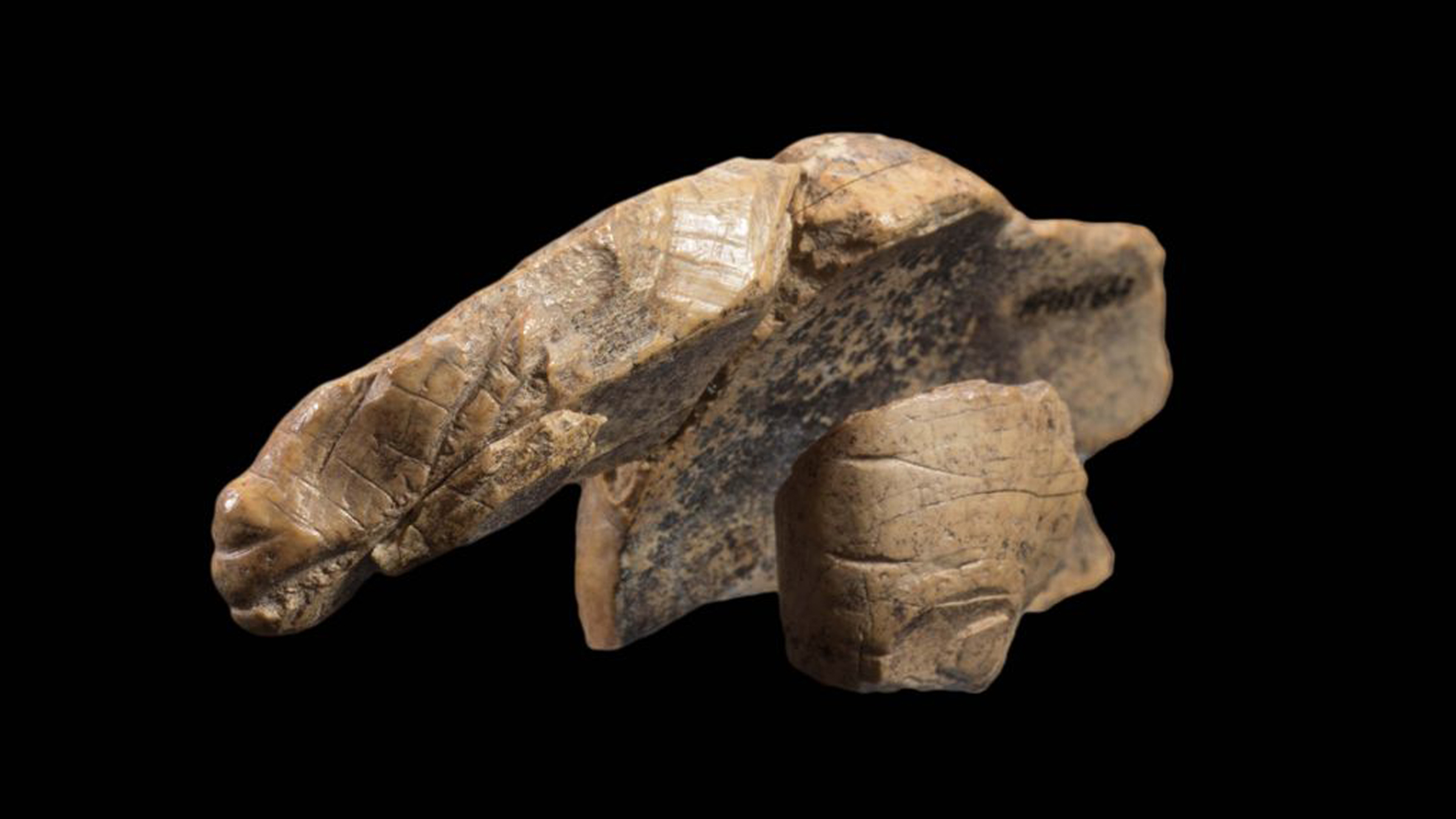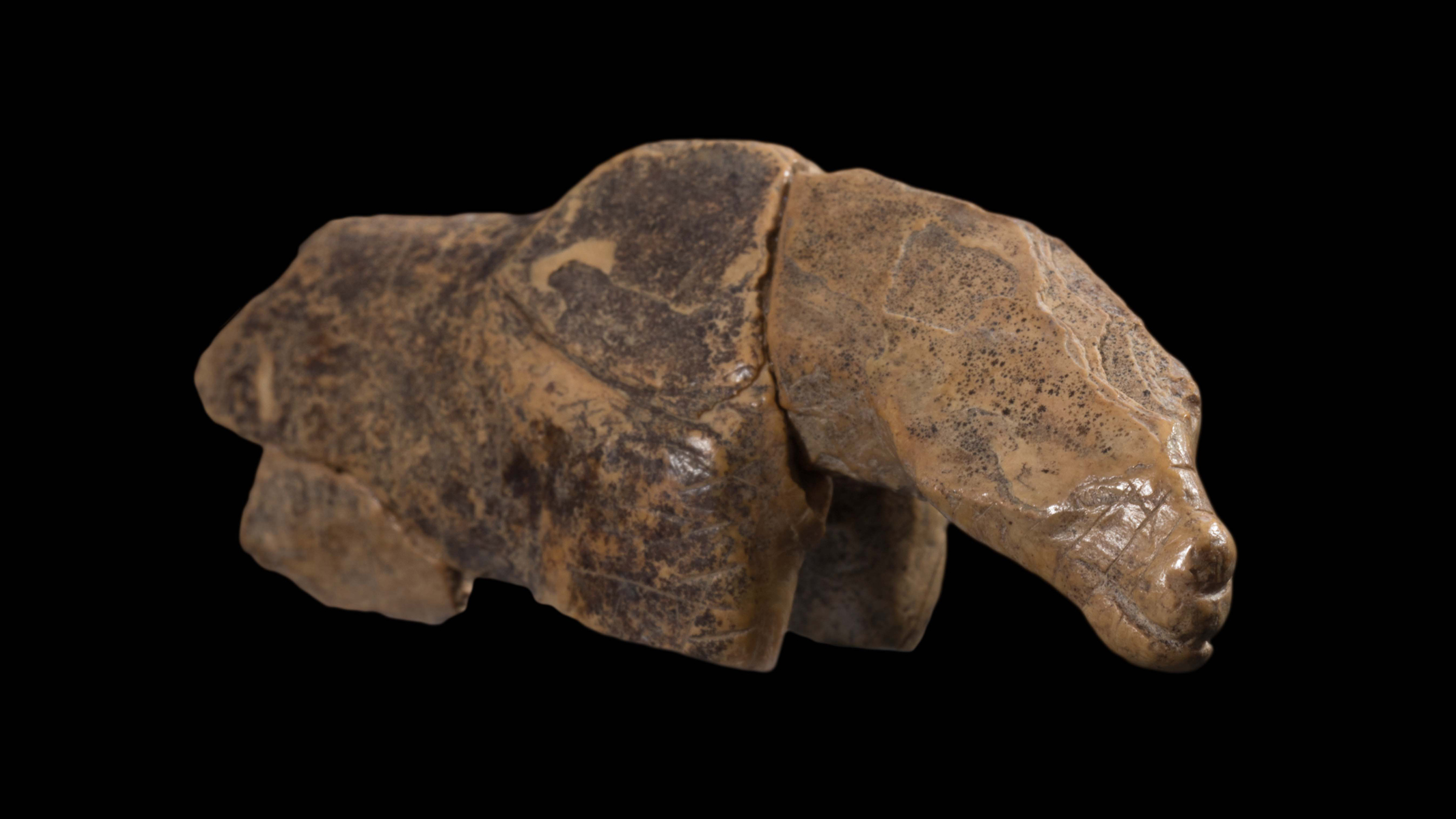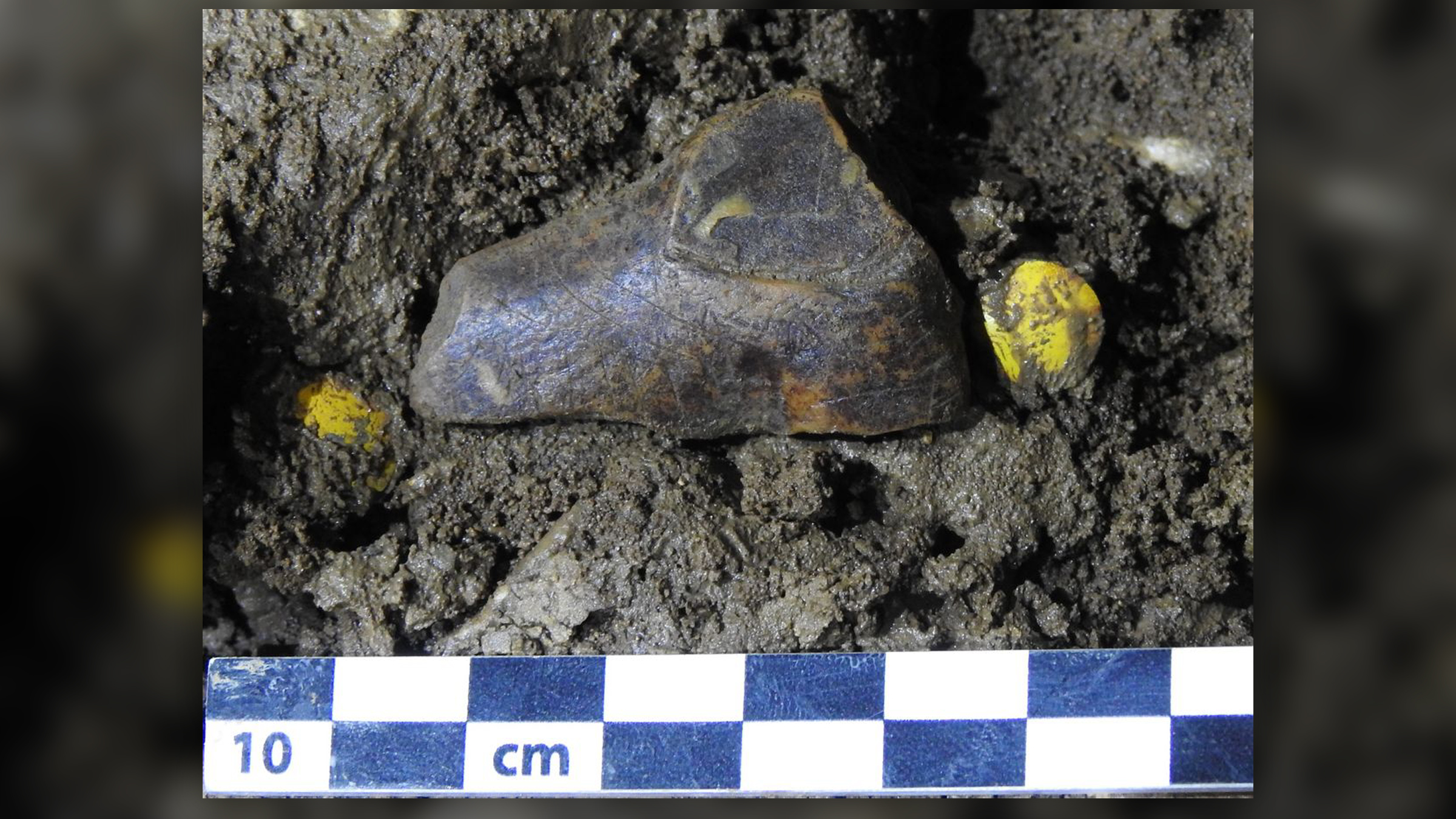
Archaeologists in Germany have discovered the missing piece of an ice age carving deep in a cave. But the new addition of the ivory carving, originally thought to depict a horse, has actually complicated matters: Now, researchers aren't sure if it portrays a cave lion or a cave bear.
Researchers previously found the head of the 35,000-year-old figurine in the cave Hohle Fels in the mountainous Swabian Jura region in the southern part of the country. The cave, which translates to "hollow rock" in German, is part of a UNESCO World Heritage Site and is well known for its Upper Paleolithic (about 50,000 to 12,000 years ago) artifacts. At the time, the carved head was the first known ivory carving from the cave.
But the newfound "body" part of the carving has thrown the equine interpretation out the window. "We still cannot identify the animal species depicted with certainty," Nicholas Conard, a professor in the Department of Prehistory and Quaternary Ecology at the University of Tübingen in Germany, said at the "Find of the Year" news conference on July 27, according to a translated statement.

The carving likely depicts a bear, he said. "The figurine now has a massive body, shows the typical pronounced bear hump at shoulder height and presents itself in a posture that could imitate the trotting gait of a bear," Conard noted.
But the carving also has similar anatomical features to a cave lion, which lived in Eurasia at the time. "It is by no means always easy to reliably identify Ice Age depictions, especially when they have been preserved in such fragmentary form," Conard said.
Related: Man holding penis and flanked by leopards is world's oldest narrative carving

After the initial 1999 finding of the head, researchers unearthed a total of five fragments of the ivory figurine, including a small piece of cheek. "It therefore makes sense to look extra carefully for the missing parts of this animal in the years to come," Conard said.
The newly discovered "body" piece measures about 1.6 inches long, 1 inch high and 0.2 inches thick (4 by 2.5 by 0.6 centimeters). Whoever crafted it detailed fine and deliberately carved line patterns on the mammal. Upon finding the body, the researchers continued excavations and found another ivory fragment that might be the creature's left front leg.
The pieces are now on display at the Prehistoric Museum in Blaubeuren (URMU).
A study on the new finding, which was crafted by the Aurignacian Palaeolithic culture, was published in the current issue of the journal Archaeological Excavations in Baden-Württemberg, published by the Baden-Württemberg State Office for the Preservation of Monuments.







